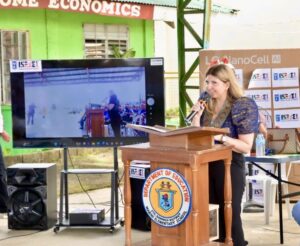Investments play a crucial role in enhancing the Philippines’ capacity to produce and export more products with a higher value.
This was the statement of Department of Trade and Industry (DTI) Secretary Alfredo Pascual after Philippine Statistics Authority (PSA)’s preliminary data recorded the country’s February 2023 merchandise export sales at USD5.1 billion, posing an 18.1% decline.
The Philippines’ overall merchandise export performance for February 2023 was influenced by the cooling down of global demand for electronic products, posing a decline on the country’s top export sector—electronics, which accounts for 52.7% of total exports.
“Evidently, we need to diversify our export basket, and investments play a key role in developing Philippine capabilities to produce and export more of higher value products. We will focus on investment attraction and industry development in sectors where we have established capabilities that can serve as a solid foundation for export growth and are well-positioned to seize opportunities in emerging trends. These are: Industrial, Manufacturing, and Transport, Technology, Media, and Telecommunications, and Health and Life Science,” Secretary Pascual said.
“Industry players expect decline in exports to be temporary as global investments in semiconductor manufacturing have been increasing significantly. Thus, we need to position the Philippines to take a greater share of this increasingly important global value chain,” he added.
The DTI continues to pursue initiatives to strengthen the country’s semiconductor industry. In collaboration with the Semiconductor and Electronics Industries in the Philippines Foundation, Inc. (SEIPI), DTI led a delegation in January 2023 to the US’ Consumer Electronics Show (CES) 2023, dubbed as the ‘most influential tech event in the world.’ The country’s participation resulted in potential cooperation between US-based high-tech companies with Philippines-based companies. The CES 2023 participation was followed through by trade and investment promotion activities during the Presidential working visit to Japan in February where the President was able to secure multi-billion investments in the Philippines’ semiconductor industry.
Meanwhile, to support exporters in their efforts to widen their reach in the Middle Eastern market and beyond, the DTI organized an Outbound Business Matching Mission (OBMM) to the Gulf Cooperation Council (GCC) in time for Gulfood 2023, one of the world’s largest food and beverage sourcing event based in UAE. This mission covered the capitals of Bahrain, Kuwait, Qatar, and the United Arab Emirates (UAE). Through the business matching activities, the participating Philippine exporters were able to book and negotiate sales amounting to over USD10.8 million in total.
As of February 2023, export sales to top markets were: Japan with USD822.7 million, United States of America (USA) with USD756.0 million, China with USD611.6 million, Hong Kong with USD526.9 million, and Singapore with USD310.6 million.
Globally, the Philippines has the potential to increase its exports to the world by USD49 billion, based on the Philippines’ supply capacity, the demand conditions in the target market, and bilateral linkages between the Philippines and the target market, according to the Export Potential Assessment (EPA) study undertaken by the International Trade Centre (ITC). The EPA methodology goes beyond commonly used measures of comparative advantage by including additional variables such as GDP, population growth prospects, elasticities, tariffs, and geographical distance.
“To unlock the export potential of the Philippines, we need to better understand the needs of our clients, utilize our preferential trade arrangements such as Regional Comprehensive Economic Partnership (RCEP), make our products and services more visible in international markets thru trade promotion, and more importantly, invest and expand our production capabilities to meet the demands of foreign markets,” Secretary Pascual stressed.


